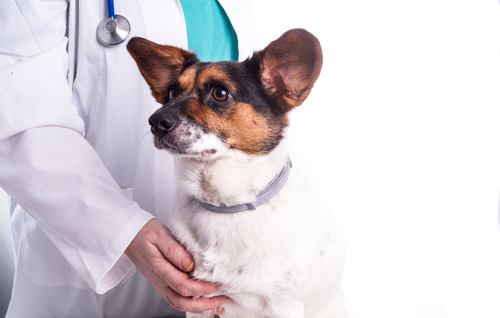[ad_1]
Nephroliths – or kidney stones – are onerous clusters that increase within the kidneys or urinary tract. While bladder stones are extra not unusual than kidney stones in canines, each are shaped when an accumlation of salts or minerals naturally discovered within the urine shape into clumps.
Kidney stones can vary from a light inconvenience to a clinical emergency. Some canines would possibly not display any signs in any respect.
Why do a little canines increase kidney stones?

Kidney stones in canines increase when an overproduction of ordinary mineral salts within the urine building up into crystals. If sufficient of those crystals unite, they shape small sand sized granules that finally transform better clusters.
Both gender and breed can play a task within the building of kidney stones in canines. Females are extra vulnerable to stones than men. However, male canines are at upper possibility for critical headaches because of their lengthy, slim urethras the place stones can transform lodged.
While any canine can increase kidney stones, positive breeds are extra vulnerable. Miniature Schnauzers, Lhasa Apsos, Yorkshire Terriers, Miniature Poodles, and Shih Tzus best the listing of “stone former” breeds.
In addition to gender and breed, kidney stones in canines may also be brought about by means of metabolic problems, positive delivery defects, urinary tract infections, and diets that build up urinary pH.
What signs will a canine with kidney stones showcase?

Many canines with kidney stones by no means display medical indicators. In reality, the situation is from time to time recognized when radiographs of the stomach are taken for a fully other explanation why. However, canines affected by positive sorts of stones or the ones with urinary blockages ceaselessly have a number of of the next signs:
- Abdominal ache
- Discomfort right through urination
- Licking penis or vulva
- Blood within the urine
- Urinary injuries
- Foul smell to urine
- Increased or lowered urine manufacturing
- Lack of urge for food
- Vomiting
- Lethargy
- Fever
If you canine is appearing any of the above indicators, search veterinary care promptly.
How are kidney stones in canines recognized?

As discussed above, bladder and kidney stones in canines are from time to time recognized unintentionally when veterinarians spot them on radiographs or ultrasounds. Stones are very dense and seem shiny white on diagnostic pictures, making them simple to peer.
Urinalysis and blood paintings also are advisable. These diagnostic checks can lend a hand your vet hit upon indicators of an infection and montior adjustments in kidney serve as.
How are kidney stones handled?

The process remedy for kidney stones is dependent upon the canine’s medical signs. If they aren’t inflicting any issues, your vet would possibly decide to easily observe the stones or let them cross naturally.
However, canines affected by painful signs want quick care. If no blockage is provide, a mix of antibiotics, nutrition, and a number of contemporary, filtered water will have to do the trick. This means takes time, however maximum smaller stones will dissolve with the correct mix of drugs and/or way of life adjustments.
There are two choices for canines with life-threatening blockages or stones that can not cross organically. They will also be got rid of surgically or damaged down into satisfactory bits by means of a procedure known as lithotripsy. Dr. Berent of the Canine Health Foundation explains some great benefits of this process over conventional surgical treatment:
“We can go in with a scope and see the stone. We then put a laser fiber through a cystoscope and direct it onto the stone. When the stone comes in contact with the laser, the energy fragments the stone until the pieces are small enough for removing. Over 90 percent of the time we can get stones to pass. Patients are able to go home the same day, which also helps to reduce the cost versus conventional surgery.”
How are kidney stones in canines controlled long-term?

Some canines tend to shape stones a number of occasions all through their lives, however there are precautions you’ll take to lend a hand save you them. Regular urine and blood checks will have to be carried out, although the canine has no signs.
Depending on which form of stone(s) your canine is vulnerable to, your vet may additionally prescribe a long-term remedy and nutrition plan. There are a number of prescription diets that lend a hand organize and save you kidney stones. Some steadiness urinary pH, whilst others regulate protein ranges or decrease stone forming minerals. Finding the proper one would possibly take some trial and mistake, however nutritional control will also be very efficient.
In addition to a strict nutrition, canines with a historical past of kidney stones will have to drink numerous filtered water and be taken out to urinate often. The extra water a canine beverages, the extra dilute the urine will transform, serving to to flush stone forming salts and minerals each and every time they potty.
With the assistance of your veterinarian, you’ll stay your canine wholesome, glad and freed from kidney stones.
H/T to Dogster, Whole Dog Journal, Pet Health Network
[ad_2]



